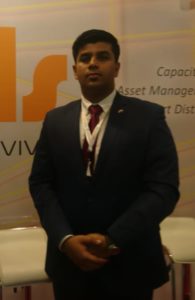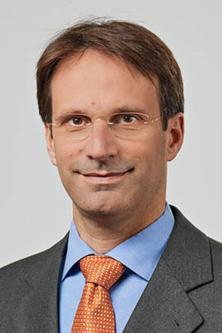Stakeholders share insights on how innovative technologies related to energy storage and automation are supporting Germany’s shift to renewable energy by ensuring reliability and addressing the issue of intermittency, while helping reinforce German manufacturers’ position in the global market as producers of energy-efficient technologies…

Stefan von Westberg
For long, Germany has been a forerunner of the energy transition, says Stefan von Westberg, Head of Sales and Marketing, CMBlu Energy, highlighting the strong regulation in place to support the development of a diverse renewable energy mix, including onshore and offshore wind and strong solar generation in the south of the country. However, von Westberg admits that the country’s target of generating 65% of its power from renewable sources by 2030, in parallel with the move to phase out coal and nuclear energy, poses a challenge to the energy sector. “In Germany, we are in a difficult situation, because we decided to phase out nuclear and coal, but at the same time, the figures for the development of new wind farms are at the lowest for the past 20 years, and there is really a crisis on the wind side,” he says.
Additionally, von Westberg points out that there is also an imbalance between generation and consumption of energy loads throughout the country. “Industrial loads are more in the south of Germany,” he explains, “and the big generation of wind are in the north of Germany. Right now, we are planning direct current transmission lines, and the government calculated that over EUR 50 billion investment is needed in grid infrastructure to get the electricity from the north down to the south.”
In view of these challenges, von Westberg emphasises, a successful energy transition needs to be steered by the government and supported by right tools and right incentives. “We want to phase out the conventional power generation, but we are not supporting renewables with appropriate solutions,” he says, pointing out that energy-storage solutions are not yet supported by the government, and smart grid initiatives are only on a prototype scale.
Von Westberg says there is strong opportunity for energy storage batteries to help address issues related to intermittency. “If we think of huge energy-storage batteries with hundredsof megawatts, we can reduce the investment needed for grid extension dramatically,” he says. “Because the grid in Germany is always constructed according to maximum load. If we can reduce peaks with some batteries and energy-storage solutions, we can balance the power that goes through the lines much better, and extra lines can be reduced.”
Speaking in the context of CMBlu’s own solutions, which includes the provision of large-scale stationary energy-storage system, von Westberg discusses how organic flow batteries, as part of a renewable energy-storage system, is an important technological leap, as the design offers the advantage of being scalable. “It [an organic flow battery] has the energy medium as liquid solution, and the energy converter is the hardware,” he explains. “If you look at the electrolyte, they are pumped to two circles, and batteries are charged and discharged. The big advantage of that is you can increase the capacity by increasing the size of the tanks and increase the power of the battery by multiplying the number of converters.”
Von Westberg points out that theoretically, there is no limit to the scale to which the batteries can be used, as it depends on the design. “In theory, there is no limit in the capacity,” he says. “We want to build large-scale-capacity storehouses or warehouses. Just how in the storage for computer, we started with kilobyte and megabyte, and now storage for computer is cheap, we think the same development will take place for energy storage.” Today, he says, the company has a number of projects to develop storage units for grid applications. He says there has also been a move to use storage systems to address energy requirements in districts for private housing and to balance generation from rooftops and changing electricity.”
Discussing opportunities for adoption of energy storage, especially in relation to the company’s products, von Westberg says that first, the solution can help in integration of renewable energy. “For industry with heavy energy usage,” he says, “they can reduce their peak power through peak shaving and reduce the cost of electricity dramatically.” He says that it can also help in providing infrastructure for electric mobility, adding that in Germany, electric vehicles are growing faster, and there are several charging stations on the highway. “You need several megawatts that can charge several cars simultaneously,” he says. “The grid, in most locations are not sufficient, and you always need a buffer storage.” Lastly, he says, applications for batteries can also be used in districts to improve energy balancing of up to 200 households and connected facilities, including District Energy plants.
AUTOMATION AND DIGITALISATION

Mustafa Khan
In addition to adoption of energy storage, the use of digital platforms and automation can play a vital role in Germany’s energy transition, says Mustafa Khan, Sales Director, IDS. There is a huge shift and transition to renewable energy, Khan says, pointing out that the transition needs to be supported by digital platforms and solutions. “There are many challenges that arise from integrating solar or wind energy in moving from traditional to renewable generation of energy,” he says. “We can help customers to minimise these challenges and use solutions that maintain a steady network.” In the context of the company’s own range of solutions, Khan discusses how SCADA development and use of Distributed Energy Resources (DER) can help calculate and ensure stability of the grid. “Products like SCADA can help the utility understand areas where there are spikes in production in renewable energy from wind or solar sources,” he says, pointing out that as shifting weather conditions impact the production of energy, the software can help the utility understand how to focus the energy at their disposal. “We have a built-in artificial intelligence technology, where based on the previous patterns and using the forecasts from various weather forecasts, we can also make a prediction for the coming days, so they can plan their activities, accordingly,” he says. Khan adds that developing smart meter infrastructure is also integral to leveraging digital platforms to help the energy transition, as it will lead to collection of valuable data that can be analysed and used to optimise systems.
The advantage of scalability in digital platforms is also an important point Khan highlights, saying that such solutions can be implemented at a municipality level and in a city-wide scheme. In addition to getting an overview of the whole grid and providing substation automation, Khan adds, digitalisation can provide utility providers with the ability to reduce downtime and mitigate any kind of challenge that may come up in the shift from traditional to renewable energy.
PROTECTING THE GRID
While digital platforms can help enhance efficiency of renewable energy integration, Khan says that it is equally important to ensure that in using digital solutions, the grid is protected, adding that it is important for utility providers to understand and invest in cybersecurity. “We see cybersecurity as one of the most important features that has to be integrated by any utility provider related to any infrastructure, because these are the key target points, and it’s about the whole security for the grid,” he says. “You need the availability of power everywhere.” Khan adds that a key focus of the company is to provide solutions related to software and hardware, in order to prevent attacks on power plants and on substations.
Khan points out that it is important to guard such mission-critical facilities, adding that the threat can come from failure, leading to downtime and from a potential virus in the software. “When you talk about smart equipment, it’s smart based on communication and computers,” he says. “You have to safeguard your assets, check vulnerabilities and make sure things are prevented and blocked.” At the end of the day, Khan points out, this is vital to ensure stability of the energy grid. “Every downtime is a cost,” he says. “Every attack is a cost, so when you invest in cybersecurity in the long run, it helps you run and keep overall cost low.” This, he says, is especially vital in utilities – not only in power stations but also in mission-critical infrastructure, such as District Energy plants.
DEMAND SIDE

Dr Alexander Koldau
Overarching sustainability targets related to energy supply have reinforced the importance of energy efficiency among local manufacturers, says Dr Alexander Koldau, Regional Director (Middle East), VDMA. “Energy efficiency is one of the basic aims of any German engineer,” he says, adding that while this mindset was deeply embedded among people in the sector, over the past few years, environmental, political and social factors have further pushed private companies to place greater attention on energy efficiency, in the products being developed as well as in the manner in which they are being manufactured.
Dr Koldau says the awareness is also largely driven by consumer demand. “Energy is expensive,” he says, “so it’s a question of cost. Companies are not willing to invest in high energy efficiency, if it doesn’t have a payoff on the cost side. On the other hand, energy efficiency has become a basic demand of society. This is also driving some companies to put pressure on their marketing, when they are saying, ‘We produce energy-efficient [solutions]’. Therefore, at the end, they are buying top technology to actually do it, because in the long run, if you are just saying it and not doing it, it will be negative. That’s one of the reasons why they are actually among the leading companies in the world within their sector.”
Dr Koldau adds that appreciation of lifecycle cost is also the main driving force for the adoption of such products, which helps incentive better quality equipment. “Generally, German investors and buyers of German products worldwide understand that they are optimising whole investment over investment cost,” he says. “There are usually competitors that offer cheaper solutions on the investment side, but on the long run, due to possibly lower quality and energy efficiency concerning material input and manhours used for production, you will certainly come to conclusions that higher capital investment on the long run, offers higher returns.”
Hannah Jo Uy is Assistant Editor at Climate Control Middle East magazine. She may be contacted at hannah@cpi-industry.com
Copyright © 2006-2025 - CPI Industry. All rights reserved.